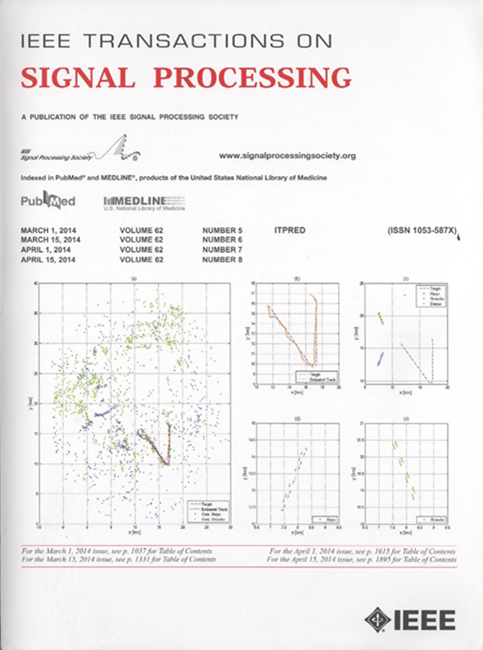A Low-Rank Projected Proximal Gradient Method for Spectral Compressed Sensing
IF 4.6
2区 工程技术
Q1 ENGINEERING, ELECTRICAL & ELECTRONIC
引用次数: 0
Abstract
This paper presents a new approach to the recovery of spectrally sparse signals (SSS) from partially observed entries, addressing challenges posed by large-scale data and heavy-noise environments. The SSS reconstruction can be formulated as a non-convex low-rank Hankel recovery problem. Traditional formulations for SSS recovery often suffer from reconstruction inaccuracies due to unequally weighted norms and over-relaxation of the Hankel structure in noisy conditions. Additionally, a critical limitation of standard proximal gradient (PG) methods for solving this optimization problem is their slow convergence. We overcome this issue by introducing a more accurate formulation and proposing the Low-rank Projected Proximal Gradient (LPPG) method, designed to efficiently converge to stationary points through a two-step process. The first step involves a modified PG approach, allowing for a constant step size independent of the signal size, significantly accelerating the gradient descent phase. The second step employs a subspace projection strategy, optimizing within a low-rank matrix space to further decrease the objective function. Both steps of the LPPG method are meticulously tailored to exploit the intrinsic low-rank and Hankel structures of the problem, thereby enhancing computational efficiency. Numerical simulations demonstrate substantial improvements in both efficiency and recovery accuracy of the LPPG method compared to existing benchmark algorithms. This performance gain is particularly pronounced in scenarios with significant noise, showcasing the method's robustness and applicability to large-scale SSS recovery tasks.一种用于光谱压缩感知的低秩投影近端梯度方法
本文提出了一种从部分观测条目中恢复频谱稀疏信号(SSS)的新方法,解决了大规模数据和高噪声环境带来的挑战。SSS重建可以表示为一个非凸低秩汉克尔恢复问题。传统的SSS恢复公式往往由于加权规范不均匀和汉克尔结构在噪声条件下的过度松弛而导致重建不准确。此外,解决该优化问题的标准近端梯度(PG)方法的一个关键限制是收敛速度慢。我们通过引入更精确的公式并提出低秩投影近端梯度(LPPG)方法来克服这个问题,该方法旨在通过两步过程有效地收敛到平稳点。第一步涉及一种改进的PG方法,允许一个独立于信号大小的恒定步长,显著加快梯度下降阶段。第二步采用子空间投影策略,在低秩矩阵空间内进行优化,进一步减小目标函数。LPPG方法的两个步骤都精心定制,以利用问题的固有低秩和汉克尔结构,从而提高计算效率。数值模拟表明,与现有的基准算法相比,LPPG方法在效率和恢复精度方面都有很大的提高。这种性能增益在具有显著噪声的场景中尤为明显,显示了该方法的鲁棒性和对大规模SSS恢复任务的适用性。
本文章由计算机程序翻译,如有差异,请以英文原文为准。
求助全文
约1分钟内获得全文
求助全文
来源期刊

IEEE Transactions on Signal Processing
工程技术-工程:电子与电气
CiteScore
11.20
自引率
9.30%
发文量
310
审稿时长
3.0 months
期刊介绍:
The IEEE Transactions on Signal Processing covers novel theory, algorithms, performance analyses and applications of techniques for the processing, understanding, learning, retrieval, mining, and extraction of information from signals. The term “signal” includes, among others, audio, video, speech, image, communication, geophysical, sonar, radar, medical and musical signals. Examples of topics of interest include, but are not limited to, information processing and the theory and application of filtering, coding, transmitting, estimating, detecting, analyzing, recognizing, synthesizing, recording, and reproducing signals.
 求助内容:
求助内容: 应助结果提醒方式:
应助结果提醒方式:


